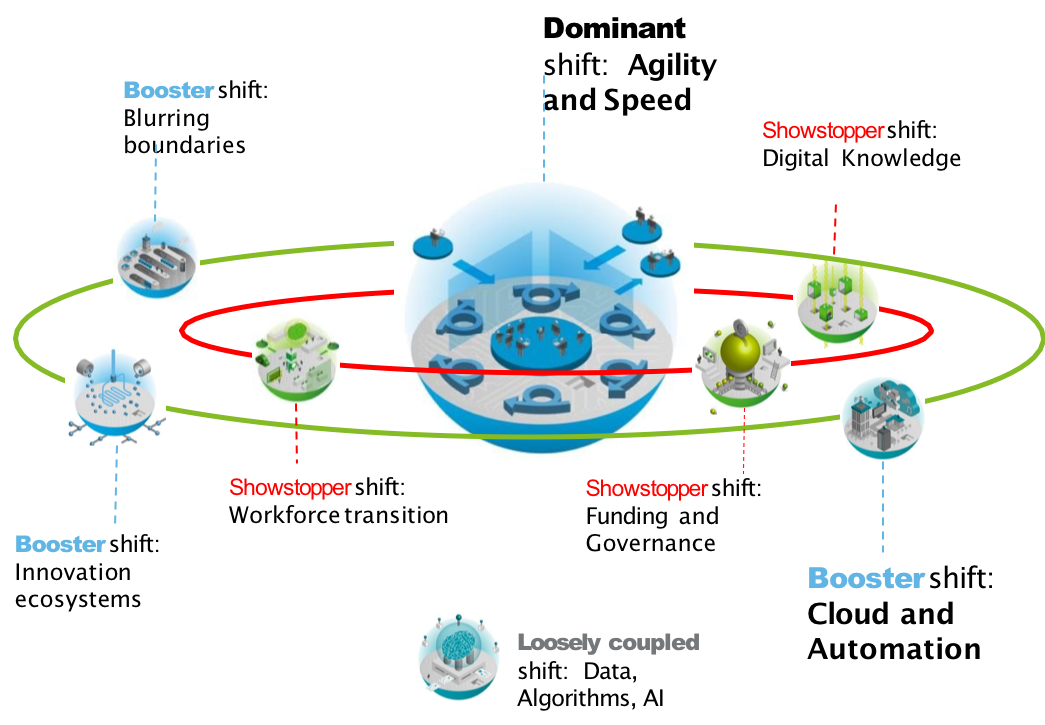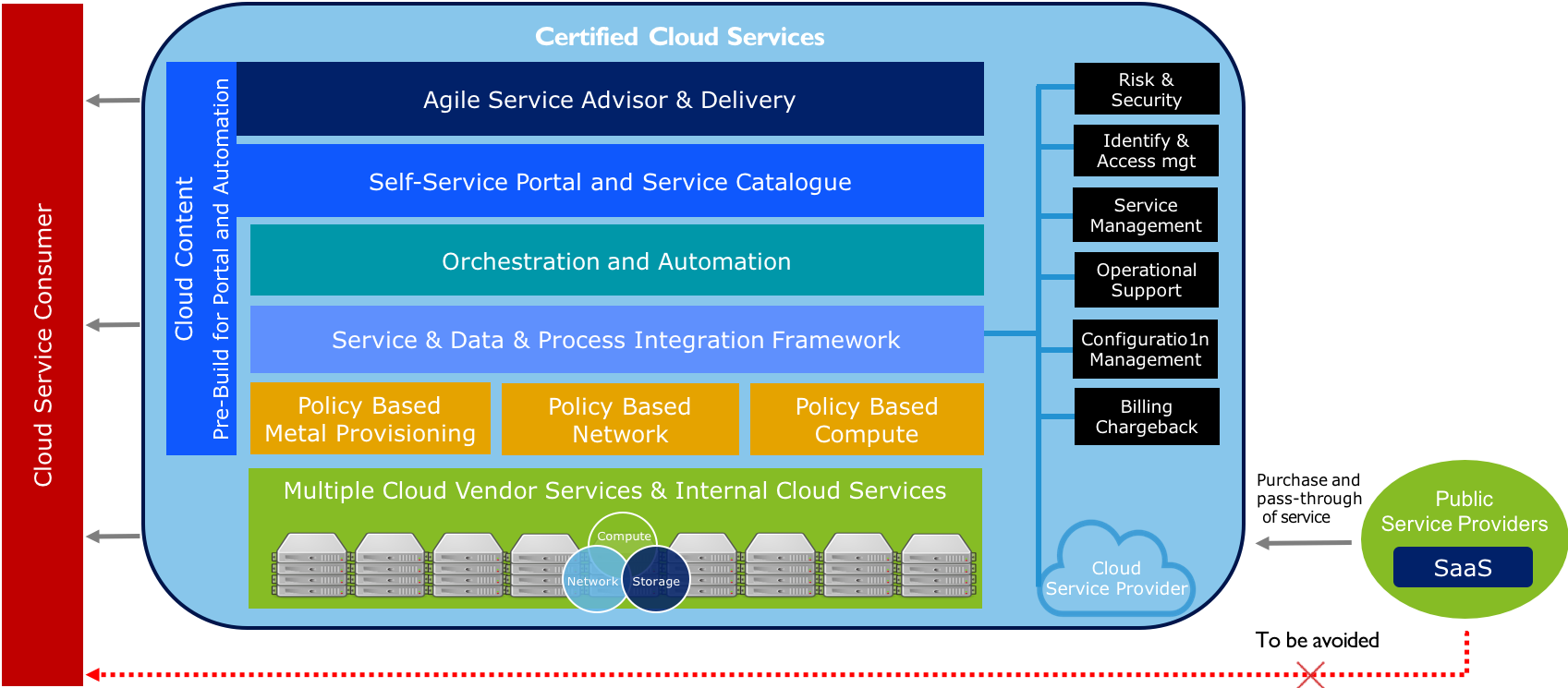IT Strategy
IT services provide efficiencies that reduce the need to maintain applications, enabling IT to focus on business alignment.
 This alignment requires new skills and both new and selectively modified processes between IT and other business and operational areas. IT may need new skills to gather business requirements and new processes to solve business challenges. The business has increasing requirements on IT, to be faster and flexible when delivering solutions which needs to be 100% available and supported 7x24x365. There is a need for utility based cost model with full transparency and cost insight up-front. IT should be able to support them with Technology advice and implementation support. Predefined “checked-boxed” self-service approach is expected for standard services like: Security, Data & Service Integration, Technology Preference, Certification demands and Operations as a Service.
This alignment requires new skills and both new and selectively modified processes between IT and other business and operational areas. IT may need new skills to gather business requirements and new processes to solve business challenges. The business has increasing requirements on IT, to be faster and flexible when delivering solutions which needs to be 100% available and supported 7x24x365. There is a need for utility based cost model with full transparency and cost insight up-front. IT should be able to support them with Technology advice and implementation support. Predefined “checked-boxed” self-service approach is expected for standard services like: Security, Data & Service Integration, Technology Preference, Certification demands and Operations as a Service.

The strategy is to deliver a clear and concise agile process for IT services supported by Multi Vendor Cloud Technology. The experience of consuming cloud services for the business will be identical / seamless through the usage of a predefined check-boxed Cloud Portal. By working together as one agile team we will deliver business value by shortening development time, increasing productivity and increasing capacity. Determined for 100% availability, reliability and secured by design increasing our effectiveness in delivering cloud services to our partners and practitioners.
Agility and Speed

A major shift within IT is the demand for Agility and Speed which is stimulated with cloud services becoming general available by credit card.
Strategy Contributions
- Increase Agility and Speed by setting up a Agile team
- Support the shift towards Cloud and Automation
Pre-requisites to make IT successful
- Accelerate Workforce transition by adding jobs with new skills
- Increase Digital knowledge / DNA by providing training and adjusting the organisational IT culture and environment
- Adjust funding and governance by transforming to digital leadership/governance, culture of innovation and funding model adjustments
IT as Cloud Provider and Broker

Cloud Consumer
The cloud consumer is the ultimate stakeholder that the cloud computing service is created to support. A cloud consumer represents a person or organization that maintains a business relationship with, and uses the service from, a cloud provider. A cloud consumer browses the service catalog from a cloud provider, requests the appropriate service, sets up service contracts with the cloud provider, and uses the service. The cloud consumer may be billed for the service provisioned, and needs to arrange payments accordingly.
Cloud Provider
A cloud provider can be a person, an organization, or an entity responsible for making a service available to cloud consumers. A cloud provider builds the requested software/platform/ infrastructure services, manages the technical infrastructure required for providing the services, provisions the services at agreed-upon service levels, and protects the security and privacy of the services. Cloud providers undertake different tasks for the provisioning of the various service models
Cloud Broker
As cloud computing evolves, the integration of cloud services can be too complex for cloud consumers to manage. A cloud consumer may request cloud services from a cloud broker, instead of contacting a cloud provider directly. A cloud broker is an entity that manages the use, performance, and delivery of cloud services and negotiates relationships between cloud providers and cloud consumers.
In general, a cloud broker can provide services in three categories:
- Service Intermediation: A cloud broker enhances a given service by improving some specific capability and providing value-added services to cloud consumers. The improvement can be managing access to cloud services, identity management, performance reporting, enhanced security, etc.
- Service Aggregation: A cloud broker combines and integrates multiple services into one or more new services. The broker provides data integration and ensures the secure data movement between the cloud consumer and multiple cloud providers.
- Service Arbitrage: Service arbitrage is similar to service aggregation except that the services being aggregated are not fixed. Service arbitrage means a broker has the flexibility to choose services from multiple agencies. The cloud broker, for example, can use a credit-scoring service to measure and select an agency with the best score